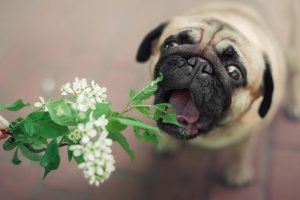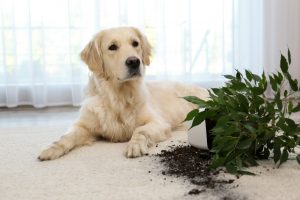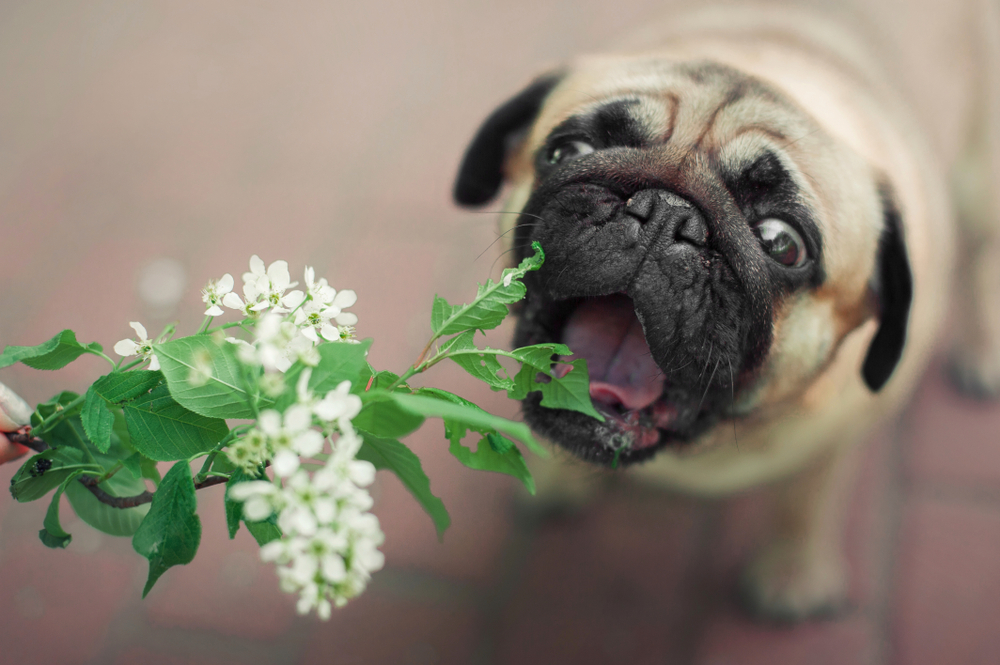From lilies to lilacs, ferns to figs, and palms to peonies, there’s a world of choice when it comes to plants. But if you’re a Pet Owner, your options are a little more limited. While they may seem innocent enough, some plants are pretty toxic to pets and can cause nasty side effects. Luckily, though, there’s a host of indoor and outdoor plants that are entirely pet-friendly.
Thinking of adding some greenery to your abode, but worried it’ll pose a threat to your kitty or canine? Here are 10 pet-safe plants you can bring into your home, safe in the knowledge they won’t result in a trip to the vet.

What are the best pet-safe plants?
Ferns
Ferns are popular house plants, and for good reason: they’re relatively easy to take care of, they’re rather eye-catching, and many varieties are completely safe for pets.
The Boston, bird’s nest, staghorn, and maidenhair are our picks for the best pet-friendly ferns. Plus, they all happen to be ideal if you’re not much of a green thumb. All they need is regular watering, consistently moist soil, and a draught-free spot.
Keep in mind that not all ferns were created equal. The ball fern (AKA the rabbit’s foot fern or deer fern) and asparagus fern (also known as the emerald fern or lace fern) are toxic to dogs and cats. And the latter isn’t even a true fern!
Spider plant
The spider plant is one cool-looking character. With its long, arched stems marked with white stripes and quaint flowers, it makes for an attractive addition to your home.
If you’re into the spider plant’s stylish aesthetic, you’ll be glad to know it’s entirely pet-safe. And if you’re not the best when it comes to keeping plants alive, you’ll be doubly glad to know it’s one of the easiest plants to look after.
Orchids
Orchids won’t pose any serious threat to your cat or dog. If your cat ingests some, they might throw up a bit, but it’s unlikely to go any further.
Orchids can be a little temperamental. But if you know how to treat them just right, you’ll be rewarded with an elegant, alluring, and downright charming floral centrepiece. They need just the right amount of water, sunlight and airflow, plus a good dose of fertiliser now and again.
Date palm
The date palm is a great indoor focal point, with its feathery fronds and generous proportions (it can grow to around two to three metres tall). It’s also pretty hardy, only requiring a humid environment, bright light, and just enough water to keep the soil moist.
The date palm is perfectly safe for dogs and cats, but be careful of the sharp tips of its fronds. If your pet bites on them, it can be a little uncomfortable.
Venus fly trap
The Venus fly trap may be hostile towards tiny insects, but it’s very friendly towards animals of the furry kind – namely, cats and dogs. Even if your pet decides to take a small bite out of this plant, it likely won’t cause any problems.
A few tips to keep your Venus fly trap happy: it needs a good amount of light (window sills are ideal spots), a shallow tray of water to sit in, and a steady stream of live insects to feed on.
Calathea
You may not know the calathea by name, but you’ll certainly know it by its looks. This group of plants has a number of varieties, each with beautiful patterned foliage in a range of colours. Keep the soil moist, the plant out of direct sunlight, and the room relatively warm and humid, and this plant will really thrive.
Considering how many types there are, you could buy a bunch of calathea plants to dot around your home. And the best part is, each and every one is pet-friendly.
Fig leaf palm
If you’re not yet acquainted with the figleaf palm, you might want to change that. This plant is quite the looker with its big, glossy, star-shaped leaves. It’s also quite happy either indoors or outdoors and is somewhat drought-resistant. You can rest easy if your dog or cat ingests some, too, because figleaf palms are entirely safe for pets.
Bromeliad
Bromeliads take quite a while to properly mature (up to three years), but at the end of that time, you’ll get an attractive plant that’s vibrant, hardy, and not overly difficult to care for. Plus, there are plenty of varieties and colours to choose from. Regardless of which kind you pick, bromeliads are one of the best pet-friendly plants.
African violet
If you’re looking for a pet-friendly indoor plant that’s a little more floral, you can’t go past the African violet. It has richly hued purple flowers and fuzzy leaves, and looks rather lovely on a kitchen counter.
Not only is the African violet very pretty, but it’s also relatively simple to take care of. Make sure you don’t overwater it and keep it in a spot with filtered sunlight.
Pet-friendly herbs
Keen to set up a kitchen garden? Basil, parsley, thyme, coriander, dill, and rosemary are generally safe for both dogs and cats. A few different herbs aren’t quite so pet-friendly, though, which we’ll list shortly.’

Are any plants toxic to pets?
Unfortunately, yes. There’s a number of toxic plants for dogs and poisonous plants for cats. These can produce some pretty ugly side effects if ingested, or even if your cat or dog comes into contact with them. It might be the leaves and stem that are poisonous, the bulb or roots, or even the entire plant.
When you’re shopping for new plants, these bad boys are best avoided:
- Marijuana
- Lilies
- Peace lilies
- Tulips
- Daffodil
- Oleander
- Amaryllis
- Chrysanthemum
- Sago palm
- Oregano
- Bay leaf
- Marjoram
- Tarragon
- Chives
Many other plants are dangerous to cats and dogs, so it’s always best to do your research before purchasing.
What should I do if my pet comes into contact with a toxic plant?
Think your pet has downed a bit of sago palm or oregano? There are some pretty clear signs of poisoning to look out for. Different plants can produce different side effects, but if your pet is experiencing plant toxicity, you may notice the following:
- Vomiting
- Diarrhoea
- Excessive drooling
- Trouble swallowing
- Irritation, burning, or swelling around the mouth area (including the tongue)
- Tremors
- Seizure
- Lethargy
- Weakness
- Coma
If your pet is suffering from any of these, get them straight to the vet – even if the symptoms are very minor. In fact, it may be worth taking your pet to the vet if you suspect your pet has eaten some of the plant, simply to rule out any problems.
To check for poisoning, your vet will perform an assessment that may include a blood test. If your pet has indeed been poisoned, they’ll provide proper treatment to combat any signs of plant poisoning, and may give you a course of pet medication to treat your furbaby after they go home.

